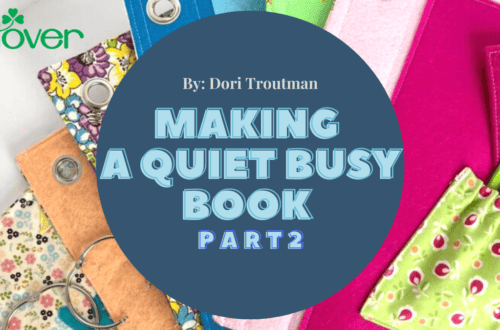18th Century Stomacher- Tutorial
Greetings fellow sewists! My name is Sarah and I am a historical costumer and maker of floofy things. I specialize in hand sewing 18th-century gowns using period-appropriate techniques, and you can find examples of these gowns and other costumes that I have sewn on my page @sewlateadoe
For those of you who may be curious about historical sewing, I thought that I might share my process for creating one of my favorite gown accessories: a stomacher. The stomacher is the centerpiece of the bodice of a sacque gown, which was a popular style of dress from the mid to late 18th century.

Stomachers are quite fun to make because the process is relatively straightforward, and the options for decorating them are plentiful. In the 18th century more was definitely more, so feel free to cover your stomacher in ruffles, bows, fringes, and more! I often look at online museum collections and 18th-century paintings for inspiration. Let’s get started!
Materials:
1 yard of fashion fabric (I’m using silk taffeta)
½ yard of buckram or stiff interfacing
½ yard of linen or other lining fabric
Clover Silk Thread- Art No. 701/149
Clover Black and Gold Hand Sewing Needles Applique Sharps No 9- Art No. 4970
Clover 5-in-1 sliding gauge- Art No. 9506
Clover Wonder Clips- Art No. 3185
Clover 45mm Rotary Cutter- Art No. 7500
Clover Cutting Mat- Art No. 7520

Step 1: I usually draft my stomacher pattern piece from the width I want at the top across the bustline and the length of my torso in the gown I am wearing. It tapers down to form a rounded V shape. There are many commercial patterns available if you prefer not to draft one, such as the patterns from American Duchess. I lay this pattern out on my buckram or interfacing and cut it out with no seam allowance using a rotary cutter and cutting mat.

Step 2: Once I cut out my first layer, I use the same shape to cut my linen lining fabric.

Step #3: Now I use the Clover 5-in-1 sliding gauge to add ½” of seam allowance to my fashion fabric piece and cut it out.


Step #4: Once I have my 3 layers cut out, it’s time to assemble them. I start by using wonder clips to fold in the raw edge of the fashion fabric by ¼ inch, and then fold it in again on itself. This encases the two lining layers, and leaves a smooth finished edge.

Step #5: Using Clover black and gold hand sewing needles and Clover silk thread (the color I’m using is called Fresh), hemstitch the folded edges of the fashion fabric and catch just the lining to keep your stitches invisible on the outside.

Step #6: The foundation of your stomacher is now complete, and it’s time for the best part: floofing it up!

For my first stomacher, I used pinked whip-gathered ruffles and flowers.

For this new one, I wanted to cover it in bows (this style is often seen in paintings of this type of gown). I like to use wonder clips to hold things in place as I move things around to play with the texture of the fabric, but I must say that I’m quite happy with how this one turned out!
The nice thing about stomachers is that you can use different ones for the same gowns to change up your look. Sometimes I also like to create a stomacher first to decide how I might want to style the rest of the gown. If historical accuracy is your goal, look to online collections like those at the Met Museum for inspiration. If historically inspired is more your forté, then have fun piling on the trimmings! Happy sewing, and be sure to check out the reel that I made to accompany this blog post.
Stay connected with Clover on Facebook | Twitter | Instagram | Pinterest | YouTube | Ravelry


